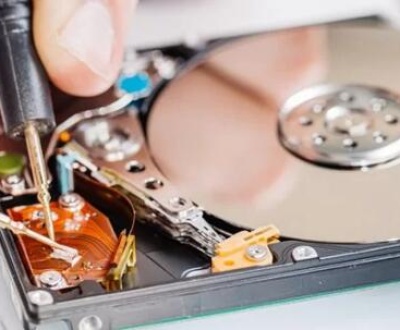The cost of data recovery can vary significantly depending on several factors, such as the type of storage device, the extent of the damage, the amount of data to be recovered, and the complexity of the recovery process. This in-depth explanation will cover the factors influencing data recovery costs, different pricing models, typical ranges for various devices and services, and why professional services may be necessary.
1. Factors Affecting Data Recovery Costs
Several factors play a crucial role in determining the final price of data recovery services. Here are the most significant ones:
a. Type of Storage Device
Different storage devices—hard disk drives (HDDs), solid-state drives (SSDs), USB flash drives, memory cards, RAID arrays, and smartphones—require varying techniques and technologies for recovery. Here’s a breakdown:
Hard Disk Drives (HDDs): Traditional spinning hard drives can suffer mechanical failure, logical errors, or firmware corruption. Recovery costs depend on the damage. Mechanical failures (such as head crashes or motor issues) are generally more expensive to fix.
Solid-State Drives (SSDs): SSDs are faster and more durable but harder to recover data from due to their complex architecture. Chip-level recovery often requires specialized equipment and technical expertise.
USB Flash Drives & Memory Cards: Although smaller in size, the recovery process for flash-based storage can still be complicated, depending on whether the issue is physical or logical.
RAID Arrays: These setups are common in enterprise environments. RAID recovery involves reconstructing lost or corrupted data from multiple drives. The complexity of RAID levels (e.g., RAID 0. 1. 5. 6. or 10) often makes recovery more labor-intensive and costly.
Mobile Phones: Recovering data from mobile devices involves extracting data from embedded memory, which can be quite challenging if the device is damaged or has encrypted data.
b. Extent of Damage
Logical Failures: These involve software-level issues, such as accidental deletion, corruption of files, or formatted partitions. Logical failures generally cost less because the hardware is intact.
Physical Damage: If the storage device has physical damage (e.g., water damage, head crash in HDDs, or broken connectors), the process becomes more labor-intensive. Technicians may need to open the drive in a cleanroom environment and use specialized equipment to recover data.
Firmware Issues: Firmware corruption requires fixing the device’s internal software that controls how the device interacts with the computer. This is generally more complex and therefore more expensive.
c. Amount of Data to Be Recovered
The more data you need to recover, the higher the cost. While the physical process of accessing the data can be the same, it takes longer to retrieve large amounts of data, increasing labor costs.
d. Turnaround Time
Some companies offer different pricing tiers based on how quickly you need your data back. If you need expedited or emergency recovery services, expect to pay more.
e. Specialized Tools and Expertise
High-end recovery labs equipped with cleanrooms and specialized tools may charge more. Expertise in recovering data from rare or encrypted devices can also lead to higher costs.

2. Data Recovery Pricing Models
Data recovery services typically use one of several pricing models. Here are the most common:
a. Flat Rate
Some companies offer flat-rate pricing, usually for more straightforward cases, like logical recoveries or minor physical issues. However, flat-rate pricing often excludes more severe cases, and the cost could escalate after an initial assessment.
b. Variable Pricing Based on Complexity
Most professional recovery services offer a tiered pricing model, where the cost depends on the complexity of the recovery process. The price can start relatively low for simple logical recoveries but increase significantly for cases requiring physical repair.
c. Free Evaluation
Some companies provide a free initial evaluation of your device, followed by a detailed quote. This can help determine whether the cost is worth pursuing based on the extent of damage.
d. Success-Based Pricing
A few data recovery companies may offer a “no data, no charge” policy, meaning you only pay if they successfully recover your data. However, they may still charge a diagnostic fee or a fee for unsuccessful but attempted recoveries.
3. Typical Cost Ranges for Various Devices
a. Hard Disk Drives (HDDs)
Logical Failures: $100–$700
Recovering deleted files, partitions, or formatting errors usually falls in this range.
Physical Failures: $500–$2.500
The cost of recovering data from a drive with physical damage is higher due to the need for cleanroom environments and specialized equipment.
b. Solid-State Drives (SSDs)
Logical Failures: $300–$1.000
SSDs are more complex, and even logical errors often require advanced techniques.
Physical Failures: $800–$3.000+
Physical damage to SSDs is harder to repair, as data is stored in flash chips, which require specialized equipment to read.
c. USB Flash Drives & Memory Cards
Logical Failures: $50–$500
Logical recoveries are generally simpler and cheaper.
Physical Failures: $200–$1.500
If the device is physically damaged, prices increase as it requires chip-off recovery methods.
d. RAID Arrays
Logical Failures: $500–$3.000+
RAID arrays are complex, and recovering data from them can be labor-intensive, especially if multiple drives have failed.
Physical Failures: $1.500–$5.000+
Physical damage to one or more RAID drives adds another layer of complexity, driving up the price.
e. Mobile Phones
Logical Failures: $100–$1.000
Accidental deletions or software issues tend to be easier and cheaper to resolve.
Physical Failures: $300–$2.000
Recovering data from physically damaged phones is more expensive due to the challenge of accessing embedded memory chips.
4. Why Professional Data Recovery Services are Expensive
Data recovery can seem expensive, but several justifiable reasons contribute to the high cost:
a. Cleanroom Environment
To recover data from physically damaged hard drives, technicians often need to work in ISO-certified cleanrooms. These rooms prevent contamination from dust and other particles that could further damage the device.
b. Specialized Equipment
Data recovery labs use highly specialized tools, like PC-3000 data recovery stations or chip readers, to recover data from damaged devices. These tools are costly, and using them requires specific technical expertise.
c. Labor-Intensive Process
The recovery process can take hours or even days, depending on the complexity of the issue. Highly skilled technicians are needed to manually repair damaged drives, extract data, and reconstruct corrupt files.
d. Research and Development
Data recovery companies continually invest in research and development to keep up with evolving storage technologies. New devices, encryption techniques, and security features make data recovery more challenging.
e. Expertise and Certification
Technicians often need extensive training and certification to handle complex recoveries. This expertise is vital to ensure the highest chances of successful data recovery.
5. When DIY Recovery Might Be an Option
If your data loss is due to a simple logical error (e.g., accidental file deletion), you might be able to recover the data using free or paid data recovery software, such as Panda Assistant, Recuva, or EaseUS Data Recovery Wizard. These programs are usually affordable, ranging from free to about $100. but they are only effective in non-severe cases and pose some risks if used improperly.
6. Emergency Services and Expedited Recovery
Many data recovery companies offer emergency or expedited services if you need your data urgently. These services can be quite expensive, with costs sometimes doubling or tripling standard rates. However, the turnaround time can be reduced from weeks to just a few days or even hours.
7. Are Data Recovery Costs Worth It?
Whether data recovery costs are worth it depends on the value of the lost data. For businesses, recovering critical files, databases, or intellectual property can justify the high expense. Individuals may have irreplaceable files like family photos, videos, or important documents. In such cases, the emotional or professional value often outweighs the financial cost.
The cost of data recovery can range from as little as $50 to over $5.000. depending on various factors, including the type of storage device, the extent of the damage, and the amount of data to be recovered. While DIY recovery tools may work in some situations, professional services are often necessary for more severe cases. Although the price may seem high, the combination of specialized equipment, cleanroom environments, and technical expertise makes data recovery a valuable service when the lost data is irreplaceable.
About us and this blog
Panda Assistant is built on the latest data recovery algorithms, ensuring that no file is too damaged, too lost, or too corrupted to be recovered.
Request a free quote
We believe that data recovery shouldn’t be a daunting task. That’s why we’ve designed Panda Assistant to be as easy to use as it is powerful. With a few clicks, you can initiate a scan, preview recoverable files, and restore your data all within a matter of minutes.
Subscribe to our newsletter!
More from our blog
See all postsRecent Posts
- Data recovery salt lake city utah 2025-04-18
- Data recovery sacramento 2025-04-18
- Data recovery miami 2025-04-18

 Try lt Free
Try lt Free Recovery success rate of up to
Recovery success rate of up to









